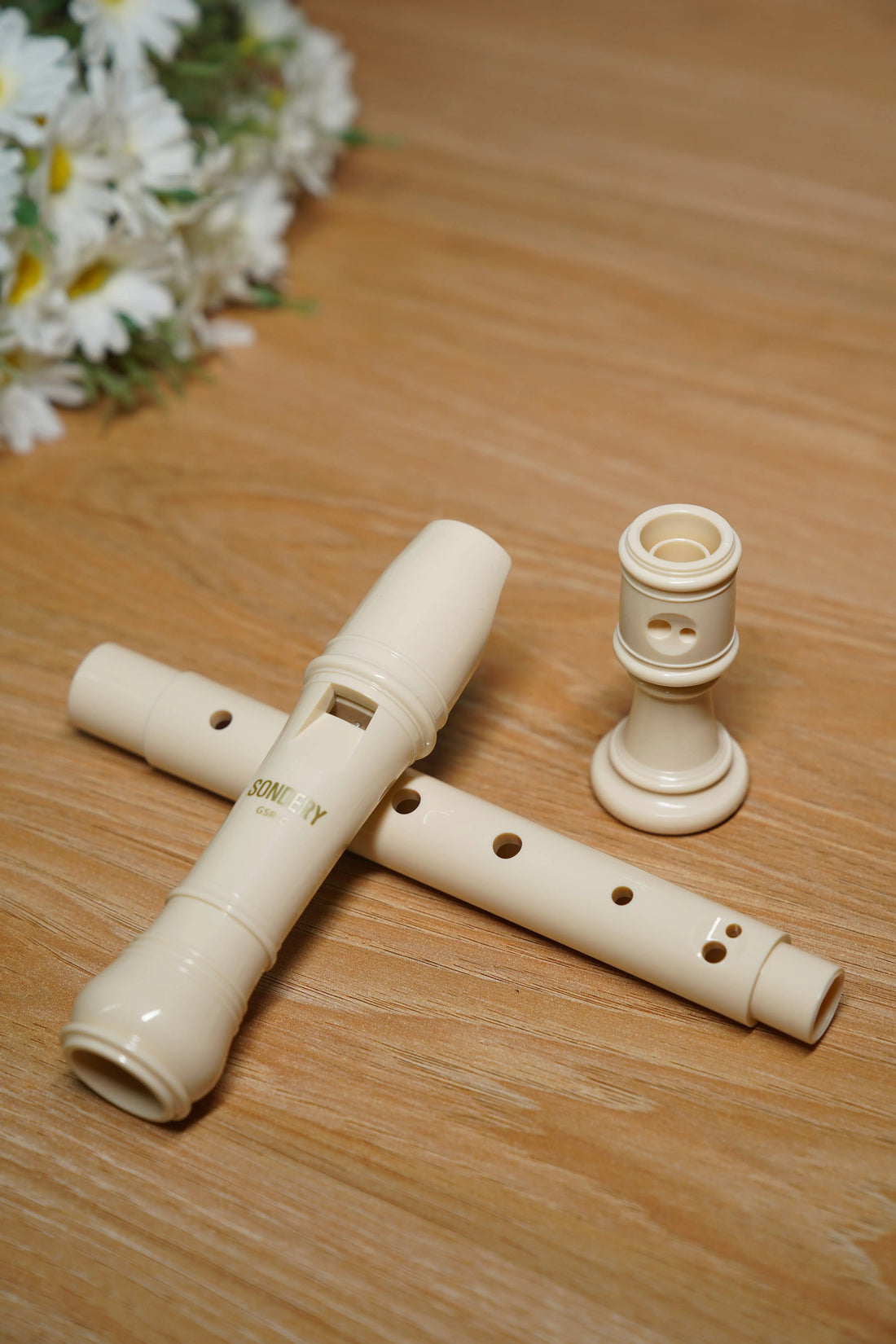
Recorder Structure and Range: A Complete Beginner’s Guide
Share
Recorder Structure and Range: A Beginner’s Guide
When you look at a recorder, it might seem like a simple plastic flute—but its design is far more refined than it appears. The recorder has been carefully crafted for centuries, balancing tradition and modern innovation to produce its clear, warm tone.
The Three Parts of a Recorder
A standard soprano recorder usually comes in three detachable parts:
-
Head joint – contains the mouthpiece and windway that directs your breath.
-
Body joint – the main section with tone holes that control pitch.
-
Foot joint – helps fine-tune the sound and provides balance.
This modular design makes the recorder easy to clean, maintain, and carry, while ensuring precise airflow for a stable tone.
The Recorder Family and Its Range
Recorders come in different sizes, each with its own pitch range:
-
Soprano Recorder – bright, clear tone, range from C5 to D7, ideal for beginners.
-
Alto Recorder – warmer sound, tuned in F, popular in classical and ensemble settings.
-
Tenor Recorder – deeper voice, tuned in C, often used for intermediate players.
-
Bass Recorder – rich, low sound, supporting harmonies in recorder consorts.
Among these, the soprano recorder with Baroque fingering is the most common choice for students and music enthusiasts.
Why Range Matters for Learners
Understanding the recorder’s range helps beginners learn scales, melodies, and even simple harmonies with confidence. The carefully placed tone holes allow smooth airflow, making it possible for even novice players to produce accurate, beautiful notes.
✨ Whether you’re exploring music for the first time or expanding your collection of instruments, a well-crafted soprano recorder is a perfect place to start. Explore our Sondery Soprano Recorder—digitally tuned, durable ABS material, and designed for both beginners and advanced players.
